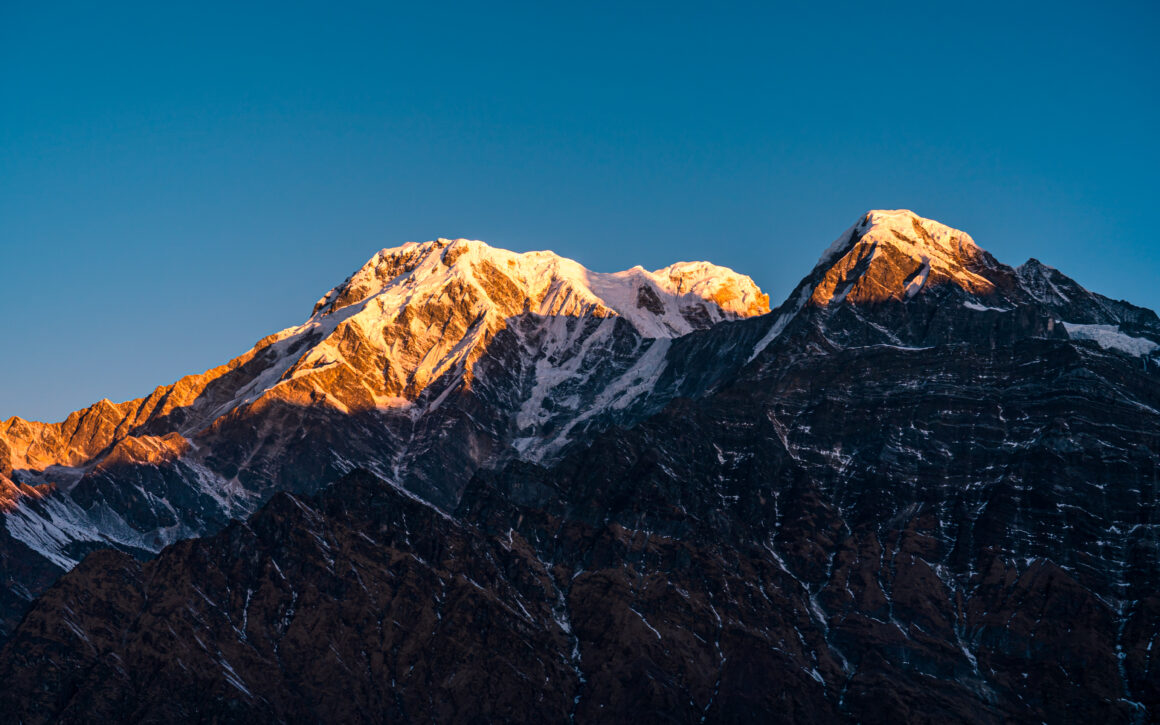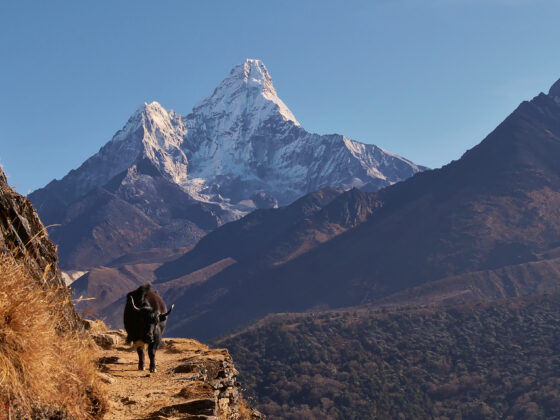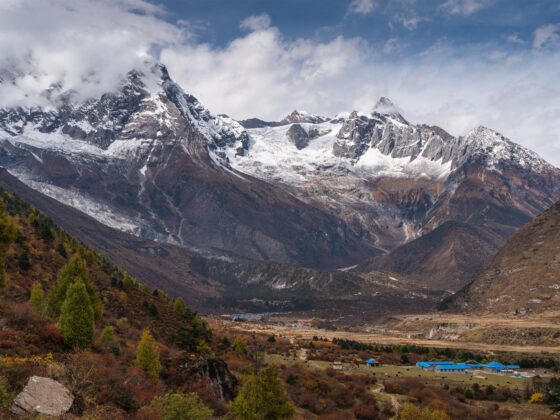While solo trekking offers a sense of personal freedom in traveling independently and setting the pace for you, it comes with navigation, language barrier and also the risks that come with venturing into isolated areas. These are the main reasons why most solo trekkers choose to join a group of other trekkers that are associated with a well reputed trekking agency. In a group trek, opportunities to meet fellow adventurers and camaraderie add to the overall experience.
Guided treks in Nepal are more comprehensive and structured adventures where the knowledge and experience of local guides are available to trekkers. They are usually familiar with the trails, weather patterns and cultural insights of the region. A professional guide also provides safety, support and assistance throughout the journey.
Solo Trekking – Pros and Cons
Pros
- Controlling the pace along with the route and how you will get to your destination
- More time for self reflection
- Peaceful trekking exercise without the distraction of fellow trekkers
- Full immersion in the nature and culture of the trekking region
- Test of independence, decision making and problem solving capacity
Cons
- Injury or emergency may prove to be more vulnerable
- Lesser support when things go wrong
- Navigation challenges
- Chances of getting lost on wilderness path
- Limited insights into the history, culture and natural attractions of trekking areas
- Struggles with language barriers
- Difficulty handling accommodation and food arrangements
- Loneliness in vast, remote and secluded areas
Guided Trekking – Pros and Cons
Pros
- Assurance of safety with the expertise of guides in terrain, weather conditions and high altitude risks
- Rich cultural insights and a deeper understanding of the local heritage and traditions
- Educative and interactive journey by sharing stories on the landmarks, customs and history of the region
- From accommodation bookings to meal arrangements, permits and transportation, everything is taken care of in a guided trekking
- Guides manage your pace, allowing for proper acclimatization and helping to avoid altitude sickness
- Experiencing group dynamics since the guided trek typically involves traveling with other people.
- Even more helpful when climbing trekking peaks like, island peak, mera peak, lobuche peak etc.
Cons
- Guided treks can be limiting in terms of route choices, pacing and schedule which is restrictive for some trekkers.
- Extra costs normally involve hiring a guide and joining a guided group trek including services of guides and organized logistics.
- In the case of a guided group, there is limited personal space. This may minimize the quiet moments that trekkers usually seek in nature.
- The popular guided adventures in the Himalayas such as Everest Base Camp Trek and Annapurna Circuit Trek are often more crowded because they tend to attract larger groups of people with the ease of having a structured itinerary and experienced guides.
- Some trekkers may feel that they are losing out on a personal challenge or accomplishment by depending on a guide to navigate them through, make decisions for them and support them.
Guides in Enhancing Your Trekking Journey
With a guide’s knowledge and expertise, you benefit from understanding the terrain, weather patterns and trail conditions that may make navigation of the rugged mountainous trails much easier and safer. Guides are also informed about local culture and provide a lot of valuable information concerning the traditions, customs and history of the regions you trek through. Such cultural immersion can make your trek even more worthwhile as you begin to more deeply appreciate the places you visit.
More so, guides make sure you are prepared for alpine trekking by helping you pace and acclimatize properly so as to avoid altitude sickness. Moreover, guides are usually trained to react timely in the case of accidents. Aside from questions of safety and direction, guides organize the logistics such as sleeping, food and permits. Overall, they add to the fun of your trek as you can rely on their experience and companionship along the route.
Solo Trekking vs. Guided Treks – Cost
Solo trekking in Nepal usually costs less compared to guided treks. A solo trekker, since he is not hiring a guide or joining a group, will be in a position to save costs. Hence, it is very ideal for travelers on a limited budget. In addition, solo trekkers have more freedom of choice as to where to stay, eat and how they can organize the trek which further lowers the costs.
On the other hand, guided treks have additional costs such as fees for the guide and porter services and other pre managed logistics. This often means transportation, meals, accommodation and permits are arranged by a trekking agency. The extra cost thus brings added value in terms of safety, convenience and support.
While the guided treks are more expensive for many trekkers, the added benefits of having expert guidance, logistical support and increased safety are worth the cost. Finally, it will depend on your budget and the extent to which you would prefer either independence or support.
Solo or Guided Trekking in Nepal?
The choice between going solo and guided trekking depends on personal preference and experience as a trekker. Solo trekking indeed has that sense of being independent and free that many find quite appealing. This, however, comes with all the risks and emergencies associated with it while not having somebody to support promptly. Hence, solo trekkers have to be very much prepared, independent and skillful to respond to any unexpected situation.
Conversely, guided trekking gives one a more regulated and secure method of spending time in the wilderness for those who prefer to have guides and logistical support. It is most preferred for those new in the region or not familiar with high altitude trekking.
More importantly, guides are mandatory for the treks that pass through the restricted zones. For example, Manaslu Circuit Trek cannot be accessed without a guide. It is the rule laid by the government with the view to protecting its fragile environment and local culture. In addition to treks in restricted regions, all Himalayan treks require guides for safety reasons.
Even areas like the Everest Base Camp where there are helicopter tours become quite enriching with a guided experience. While the Everest Helicopter Tour gives a fast view of the Himalayas, guides enrich such an experience through their detailed knowledge of the terrain and history that you fly over.


